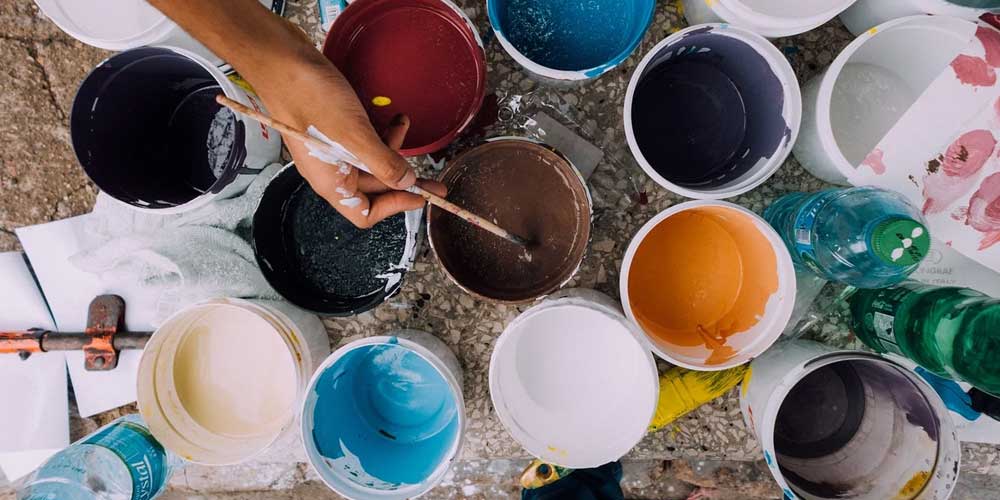Application of calcium carbonate in coatings
Calcium carbonate is a non-toxic, odorless, non-irritating white powder, and it is one of the most widely used inorganic fillers. Calcium carbonate is neutral, basically insoluble in water but soluble in acid. According to the different production methods of calcium carbonate, calcium carbonate can be divided into heavy calcium carbonate, light calcium carbonate, colloidal calcium carbonate and crystalline calcium carbonate.
Calcium carbonate is a common substance on earth. It exists in aragonite, calcite, chalk, limestone, marble, travertine and other rocks. It is also the main component of animal bones or shells. Calcium carbonate is an important building material and has a wide range of industrial uses.

1 Application in latex paint
1.1 The role of heavy calcium
(1) As an extender pigment, it has a filling effect to make it fine, uniform and high whiteness.
(2) It has a certain degree of dry covering power. Generally, ultra-fine products are used. When the particle size is close to that of the titanium dioxide, the covering effect of the titanium dioxide can be improved.
(3) It can improve the strength, water resistance, dryness and scrub resistance of the paint film.
(4) Improve color retention.
(5) Reduce costs and use 10%~50%. Disadvantages: high density, easy to precipitate, the usage amount should not be too large.
1.2 The role of light calcium
(1) As an extender pigment, it has a filling effect, is delicate, and increases whiteness.
(2) Has a certain dry covering power.
(3) The density is small, the specific surface area is large, and it has a certain degree of suspension, which plays a role of anti-settling.
(4) Reduce costs.
(5) Increase the feel. Disadvantages: easy to whiten, swell and thicken, the usage amount should not be too large, and it can not be used in exterior wall coatings.
2 Application in powder coatings
(1) It can be used as a filler for high-gloss coating products.
(2) Semi-gloss paint products can generally be prepared by directly adding calcium carbonate without adding matting agents, which saves costs.
(3) It is a white inorganic pigment that can be used in conjunction with titanium dioxide to reduce costs.
(4) Compared with other fillers, calcium carbonate is most suitable for some environmentally friendly products that require low heavy metal content, such as children’s toys and strollers.
(5) It can increase the powdering rate and spraying area of the paint, especially when it is used in mixed powder.
(6) If outdoor weather resistance is required, it cannot be used as a filler.
(7) Because of its high oil absorption, it is easy to cause orange peel on the surface of the paint film. At this time, a little hydrogenated castor oil can be added to the base material.
(8) It acts as a skeleton to increase the thickness of the paint film and improve the wear resistance and durability of the coating.
3 Application in wood coatings
(1) Used as a filler for colored primers to reduce costs.
(2) Increase paint film strength and wear resistance.
(3) Light calcium has a little thickening effect, is easy to thixotropy, and has good anti-settling properties.
(4) Heavy calcium reduces the sandability in the paint film and is easy to precipitate in the tank, so attention should be paid to strengthen the anti-settling property.
(5) Improve the gloss, dryness and whitening of the paint film.
(6) It is not suitable to use with alkali-resistant pigments and fillers.
4 Application in automotive paint
Superfine calcium carbonate with a particle size of less than 80nm is used in car chassis anti-stone coatings and topcoats due to its good thixotropy. The market capacity is 7000~8000 t/a, and the price in the international market is as high as US$1100~1,200 /t.
5 Application in ink
Ultra-fine calcium carbonate is used in ink, showing excellent dispersibility, transparency, excellent gloss and hiding power, as well as excellent ink absorption and drying. It must undergo activation treatment, and the crystal form is spherical or cubic.
Article source: China Powder Network
